100 Reasons to Become a Scientist or Engineer
By The Editors
25 additional scientists and engineers to chime in about their inspirations, to bring our count up to 100 reasons.
25 additional scientists and engineers to chime in about their inspirations, to bring our count up to 100 reasons.

DOI: 10.1511/2012.97.300
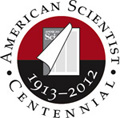
For American Scientist’s 75th anniversary in 1986, we asked 75 eminent scientists and engineers their reasons for entering their fields. As part of our centennial celebrations this year, we’ve asked 25 additional scientists and engineers to chime in about their inspirations, to bring our count up to 100 reasons. The first 75 reasons can be found in the original 1986 article, "75 Reasons to Become a Scientist." Biographies of the responders in this article can be found by clicking on their names below the entries.

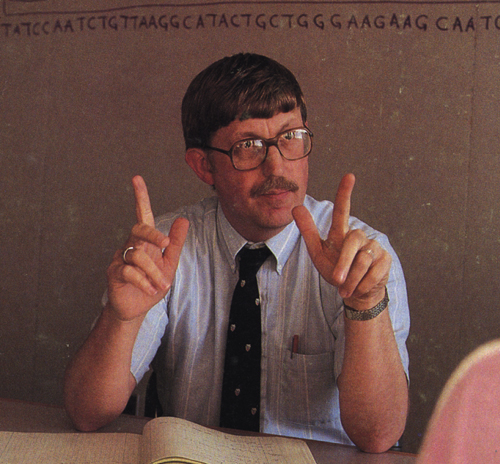
What’s inside the black box? That question captured my imagination on the first day of 10th grade in a Virginia public school, sparking an interest in scientific exploration that has never let me go. But I must confess it was an opportunity that I very nearly missed. When chemistry teacher John House gave each of us a black box containing an unidentified object and asked us to devise ways to investigate what the object was, my initial reaction was: “What a silly waste of time!”
But then I began to think about it. I knew something was different here. This was a radical departure from the science I’d previously encountered, a dry and lifeless world in which teachers poured facts into my head and I spit them back. This was the first time that someone had invited me to come up with the ideas—to design experiments myself. Rather intimidating. Rather exhilarating! I got caught up in the challenge of figuring out ways to determine what was inside the black box. (It turned out to be a candle.) After that first experiment, I knew there would be many, many more.
Francis S. Collins
Director
National Institutes of Health
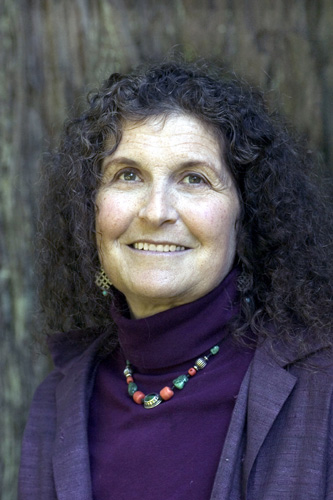
I became a chemist, as did all of the other three girls in my 1963 freshman chemistry class at Reed College, because of the inspiration of Jane Shell, our brilliant 23-year-old professor. Jane thought chemistry was the most exciting subject on the planet and so did we.
I’m so happy I studied chemistry and learned of the order and beauty of molecules. Chemistry gave me a logical way of thinking about and understanding the material world. I took a long break in my scientific career to climb mountains and raise my daughter. Now I am very grateful to have been able to return to science policy work and use my chemistry training to help bring good research to decision makers, in order to protect our health and environment from hundreds of millions of pounds of toxic chemicals in consumer products.
For me, science is like riding a bicycle. Once you learn it, it stays with you for the rest of your life.
Arlene Blum
Visiting Scholar
Chemistry Department
University of California, Berkeley
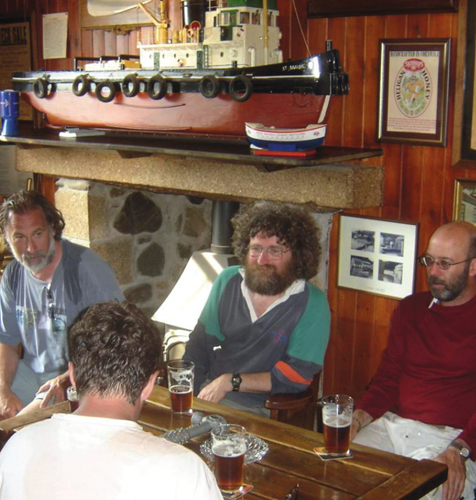
As a kid, I was never interested in rocks, minerals or fossils. I mistakenly thought that geology was merely the study of rocks, and so it never caught my attention. In my first year in university, I had to pick four science subjects out of six. Geology had its lab periods in the mornings, and I chose to do it so that I could devote more afternoons to my real passion—horse racing! But I had a brilliant first-year professor who taught me that geology is really the study of the evolution of the Earth, its atmosphere, oceans, life as well as the solid earth. This professor delivered spell-binding lectures demonstrating that most of that evolution is recorded in the rocks and minerals, and that our task is to decode that history. After one field trip, we all repaired to a local hostel where the professor demonstrated how continents float using a pint of Guinness. I was hooked! Over the years, I realized that deducing the Earth’s history is like solving a sudoku puzzle. Because we live on a dynamic planet, much of the evidence of the Earth’s evolution has been obliterated by the ravages of time, like the blank squares in a sudoku puzzle. But by careful investigation of what is preserved, we can fill in those blanks and come to a comprehensive understanding. As an added bonus, we get to travel to see some of the Earth’s great natural treasures. I write this on Kentucky Derby day. My passion for horse racing is as strong as ever—and is directly responsible for my career path!
Brendan Murphy
Professor of Earth Sciences
St. Francis Xavier University
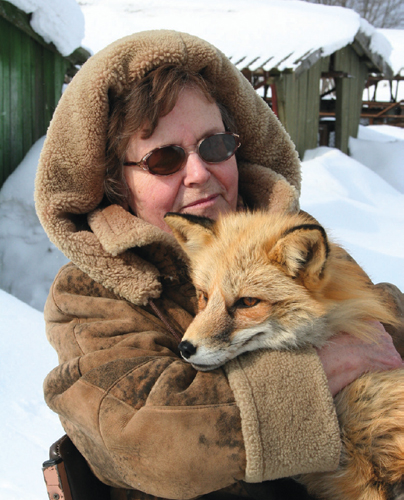
My way to science was determined by my great, life-long love for dogs. When I was growing up, my dog always participated in my childhood sports and I was happy that dogs existed on Earth. I often wondered about dogs’ behavior: Why is my dog so intelligent, understanding what I say to him? Why is he so obedient and devoted? By the time I graduated from secondary school, I wanted to learn more about relationships between dogs and people, and I knew that I would investigate dog behavior. I entered the Department of Higher Nerve Function in the Faculty of Biology at Moscow State University. During my last term there, I learned that the geneticist Dmitry Belyaev had launched a project on fox domestication. The ultimate goal of that research was to make wild foxes as domestic as dogs. When I met Belyaev I realized that my scientific fate was sealed.
Lyudmila Trut
Institute of Cytology and Genetics
Russian Academy of Sciences
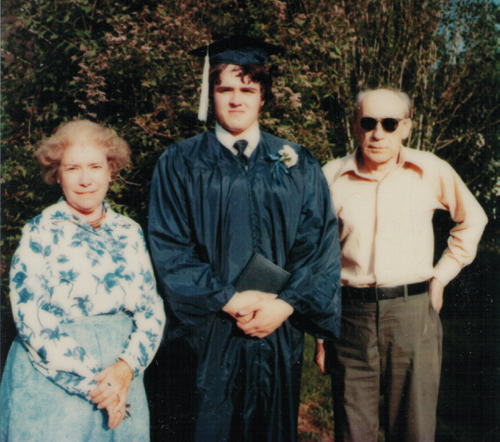
Mr. and Mrs. McKey inspired me to become a scientist. They were my next-door neighbors when I was growing up. He taught high school biology and she taught English and foreign languages. The McKeys had no children of their own, and they were like second parents to me. He tutored me in biology and she in Latin. They encouraged me to read serious literature, to think critically and to work hard so that I could pay for college. Together Mr. and Mrs. McKey taught me that science helps answer the big questions, but the big questions originate in the humanities.
Among the books they recommended I read, and the one that was most influential in my becoming an archaeologist, was F. Clark Howell’s book, Human Evolution. It showed scientists studying the past, not just by reading about it, but also by excavating fossils, by experimenting with stone tools and by studying hunter-gatherers. I thought this was the perfect profession, one in which people worked with their hands and their minds. That they did so by traveling to exotic places was all the better. I grew up in a small town, and as I grew older, distant horizons beckoned. Whenever I return there, I bring back a little piece of stone collected in the course of my travels to leave at the McKeys’ grave.
John J. Shea
Professor of Anthropology
Stony Brook University
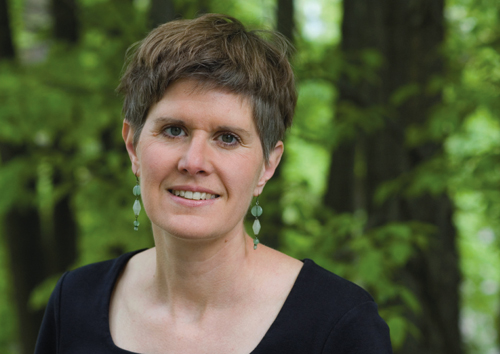
I am both a biologist and a poet. When asked what these two fields have in common, I usually say that each requires patience. More fundamentally, biology and poetry are both about the mystery of being alive. But whereas biology wants to solve the mystery, poetry simply says, “Behold.”
Lately, I’ve become interested in geomicrobiology, which seeks to understand the ubiquitous communities of microbes that live in the dark heart of the planet, miles below our feet. What energy sources feed them? What are their methods for transferring electrons? How do they cope with high temperatures, extreme pH, radioactivity?
More urgently, what role might deep-life organisms play in carbon cycling and therefore climate stability? And what are the consequences to subsurface ecosystems when we blow up bedrock and pump it full of water and biocides in order to extract oil and natural gas, as during the practice of hydraulic fracturing (so-called fracking)?
These are mysteries that need resolution. At the same time, scientific knowledge about the deep biosphere requires poets to recalibrate our images of the underworld.
A subterranean world exists below our feet. Eurydice lives.
Sandra Steingraber
Distinguished Scholar in Residence
Department of Environmental Studies
Ithaca College
When I was 14 years old, my parents bought me a used telescope, with a rickety tripod and a mirror only 10 centimeters across. I pointed it at Saturn, and was stunned to see its rings clearly. Coming back the next night, I noticed Saturn had moved relative to the background stars, except for one fairly bright “star” which hugged close to Saturn. Over many nights, that bright “star” moved around Saturn, until after 16 nights it came back to its starting point. Seeing with my own eyes the moon Titan orbit around that Saturnian jewelry every 16 days, celestial clockwork with gears of gravity, left me speechless. I wondered what other astronomical objects of art were out there. I also wondered if the laws of nature on Earth explained them all. When I realized that the Solar System was a speck of dust on the scale of the Milky Way Galaxy, and that the Milky Way was a speck of dust in the universe, I was utterly hooked. Then, seeing with my naked eye the Andromeda Galaxy with its 200 billion stars located over a million light years away, I was mesmerized by the beauty and sheer size of the cosmos. I knew that I wanted to learn everything I could about our universe.
Geoff Marcy
Professor of Astronomy
University of California, Berkeley
I just followed my hunches, passion and dreams, and somehow turned into a scientist.
Lixia Zhang
Jonathan B. Postel Chair in Computer Science
University of California at Los Angeles
Working as a doctor, the exposure to illness and death can be overwhelming. Through science, we can search for knowledge that would improve our understanding of health and disease and help us develop sustainable solutions. Working in sickle cell disease (SCD), an inherited blood disorder, I am filled with a sense of shame that it is over 100 years since its first description and yet there is only one drug available for treatment. As an African, I am ashamed that looking at the history of scientific discoveries in SCD, there has been minimum contribution from Africa and yet the highest burden of disease is in Africa. Research in SCD, a genetic disease, will change the perception that science in Africa is limited to infections like malaria and HIV. By achieving success in SCD, we can demonstrate how scientific knowledge can be translated into health benefits relevant to the local communities while at the same time generating scientific knowledge that would be of global significance. The exposure to illness and death still overwhelms me, but I continue to work in both medicine and science, as a reminder of how much we need to do and how much we do not know.
Julie Makani
Physician and Research Fellow
Muhimbili University of Health and Allied Sciences and University of Oxford, Tanzania
Although at the time I had no idea what the term meant, I am pretty sure I became a scientist while spending innumerous afternoons in my grandmother’s backyard back in the mid-1960s. During those unforgettable years, I first realized that there were millions of small and big secrets in nature that no formal school would ever reveal for me. Instead, if I wanted to learn something about them, I had to get in there, into the depths of that mystery-ridden backyard, and simply figure it out for myself. It was on those afternoons, lost in exploration and contemplation of that tropical universe, that I learned how much I enjoyed being curious about all the living things that surrounded me. In that refuge, guided by my grandmother, I discovered the joy of probing the unknown on voyages that only our imagination can plan and track. It was then that I realized that by adding a bit of creativity and persistent work to the mix, the impossible could, sometimes, become possible.
Miguel Nicolelis
Professor of Neurobiology, Biomedical Engineering and Psychological and Brain Sciences, and Co-Director of the Center for Neuroengineering
Duke University
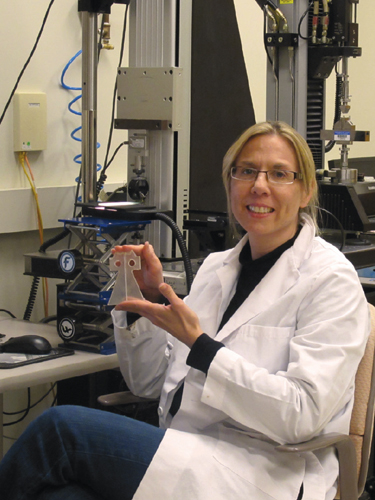
It started with recycling—the idea that you could take an old bottle or can and turn it into a new one sparked an early realization that the materials and structures we create have a life cycle, just like a biological system.
My inclination toward science and discovery was fueled by elementary and secondary school teachers, who emphasized science. Nearly 40 years later, I still remember many of the projects I did in the classroom. My favorite involved building my own small ecosystem over the course of the year—starting with growing grass, then introducing crickets, then small frogs. My scientific path was confirmed in high school by an amazing physics teacher, who introduced me to the beauty of the quantitative aspects of science.
The exposure to many scientific disciplines at an early age combined with the awareness that science can be purposeful and bring solutions to everyday problems germinated an academic career focused on developing bio-inspired materials.
Nancy R. Sottos
Professor of Materials Science
University of Illinois at Urbana- Champaign
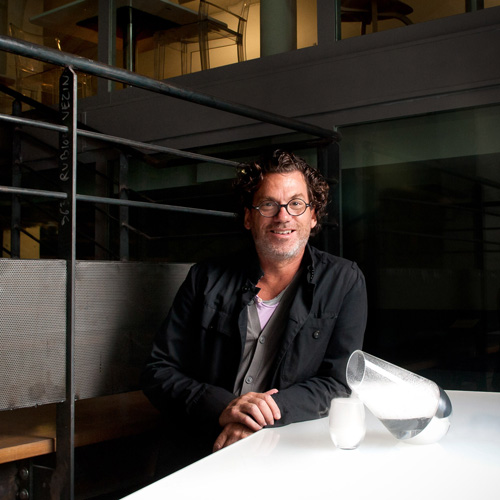
As a young boy, and even as a young man, I could not imagine my future. Many things interested me, like writing, acting, math and history. I wanted one day to do it all. I could not conceive of a career void of passion. But what that career would be I had no idea. Becoming a scientist happened over years of indecisiveness: first my undergraduate education, then my graduate work and finally my postgraduate work. By now, convinced I had left all doors open in my educational wanderings, I realized I had become a scientist, and I loved it. I was free to discover the future and finally knew where to start.
David Edwards
Founder of Artscience Labs
Harvard University
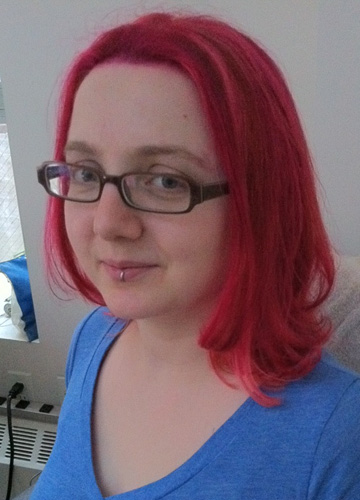
Becoming a scientist unlocks possibilities: We can discover truth in our world and share our knowledge. I like to use what I’ve learned to build things that teach others how to build things too. I think one of the best things about being a scientist is that your work can help others and be built upon in a never-ending process.
Limor Fried
Founder
Adafruit Industries
I became a scientist because one summer day, back when I was 17, I found a swarm of honey bees hanging from a tree branch and brought them home in a simple hive. Watching these insects closely each evening after work, I soon found myself mesmerized by the intricate behaviors of the individual bees and by the peace of their community. That thousands of insects could live together so closely and harmoniously, and could build delicate combs filled with delicious honey, was an almost miraculous wonder that left a deep impression. This experience, more than any other, set me off on my life’s work of exploring the inner workings of honey bee colonies. My goal has been to understand how the tiny-brained bees in a hive, much like the cells in a body, can work together to create a functional unit whose abilities far transcend those of its constituents. Solving mysteries about the wonderland of the honey bees’ society has been immensely satisfying. Nothing is more rewarding than being the first curious human being to find the solution to some puzzle about the natural world.
Thomas D. Seeley
Professor of Neurobiology and Behavior
Cornell University
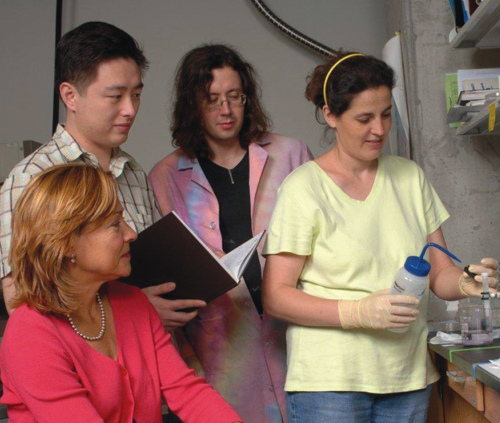
When I was little, I was fascinated by natural phenomena to an extent that probably worried my parents (in fact, I know it did)! I played with water and light, dirt and bugs, for hours, and eagerly took apart almost every machine and device. As I grew older I decided to major in music in college, mostly because in high school it was made clear to me that girls were not welcome in advanced science and mathematics classes. Luckily it took less than two years for me to realize that the natural world was far more interesting to me. Although I was older than my classmates and had to work my way through college (showing up for calculus classes in my waitress uniform from time to time) it was the right path for me, because science is exciting! Regardless of how well we understand a phenomenon, we are always encountering surprising and unexpected aspects that we, and often nobody, had thought of. It was not until well into my faculty career that I encountered the impact of working on problems that truly affect individuals and society, the fundamental motivating force of engineering. This shaped me irreversibly, and although I work largely on scientific problems, the goal of helping others through my research discoveries has become a critically important aspect of what I do.
Naomi J. Halas
Professor of Electrical and Computer Engineering, Physics and Astronomy, Chemistry and Bioengineering
Rice University

I went to Cornell on a scholarship and enrolled in engineering physics because the professor in charge of that program contacted me. During my five years (the length of Cornell’s engineering programs), I had many inspiring teachers. I took four courses from the mathematician Mark Kac. His enthusiasm while presenting math was infectious. Only many years later did I learn that he was a highly respected mathematician. Dale Corson was my professor for electricity and magnetism, and later the advisor for my senior project. He was a disciplined teacher who made subject matter crystal clear. I met Ira Bernstein when I took a short summer course at UCLA on plasma physics. I was in the air force, studying the phenomena associated with high-altitude nuclear weapon bursts and the short course looked to be useful. Bernstein demonstrated the qualities I admired in Kac and Corson: clarity of presentation, humor and mathematical brilliance. I had joined the air force to fulfill an ROTC commitment and concluded I needed more knowledge. I decided to get a doctorate in physics and applied to Princeton so I could work under Bernstein. I later met Lew Allen, a Ph.D. physicist, when I was assigned to the physics division of the Air Force Special Weapons Center in Albuquerque, New Mexico. Lew was the chief scientist, and a principal reason that I stayed in the air force for 11 years. He was an excellent physicist but an even better human being. His honesty and integrity set standards that I have tried to emulate.
John F. Ahearne
Executive Director Emeritus, Sigma Xi
Former Chairman, Nuclear Regulatory Commission
I gravitated toward the sciences in grammar and high school because of a natural curiosity I had about the physical workings of the world, the nature of the cosmos, and the meaning and significance of my own life. And it became more and more clear to me, the more exposure I had to science, that it was the only intellectual endeavor that had any chance of answering my questions. I was struck by the simple beauty of the fact that, in the end, nature is the final arbiter, not some self-designated human authority. And I was right to make the choice I made. It has been a very fulfilling life, and allowed me to feel a deep connection to all that surrounds me. And isn’t that, in the end, what we all seek?
Carolyn Porco
Cassini Imaging Team Leader
Space Science Institute
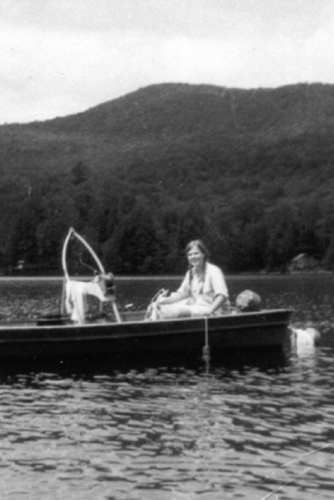
I grew up in a family governed by businessmen. Education was highly valued, but the opinions of women were not. It was at Skidmore College that I began to appreciate that science, as a “way of knowing,” carried some clout. I remember distinctly when it dawned on me that if you had knowledge derived from the scientific method, people would have to take it seriously. I was hooked. For my senior thesis I measured the manganese budget of a small lake. It didn’t matter to me that very few people would care about this topic (the paper has been cited six times since 1975!). What mattered was that I could tell a story that those people would believe—because I had evidence.
I feel very lucky to have stumbled onto my career path. It is such a privilege to be paid to discover new things about nature, while being surrounded by talented youth. It’s no wonder scientists are reluctant to retire!
Sallie (Penny) Chisholm
Martin Professor of Environmental Studies
Massachusetts Institute of Technology
As a kid, machines fascinated me. Almost every week I visited a museum in Glasgow, Scotland, studying trains, engines, model ships and all sorts of machines. When I was around 10 years old I got a chemistry set and I became obsessed with test tube reactions, the smoke, the smells and later I even made gunpowder. After doing my Ph.D. in chemistry I ended up at IBM Zurich Research in 1983 and started to work with the newly invented scanning tunneling microscope (STM). The STM is a mechanical device and I started to look at molecules with it. Eventually I started to manipulate molecules with the tip of the STM and made an abacus using buckminsterfullerene. Somehow I was working with machines again, now at the nanoscale. Well now the STM is 30 years old and my latest project is to build a synthetic brain. It’s the most daring project I can think of and in the process I started to become interested in the brain. As I watch my own brain function I realize how nonmachinelike and how approximate it is. As physical scientists get older it seems understanding biological systems gets more exciting.
James K. Gimzewski
Professor of Chemistry
University of California at Los Angeles
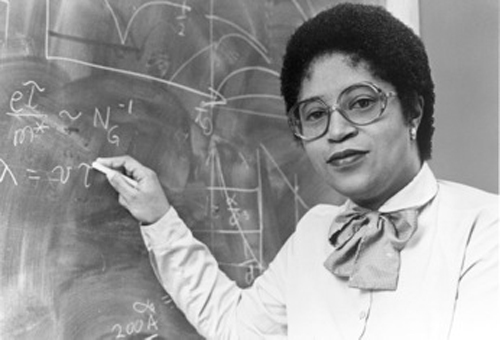
My parents were passionate about learning. My father, a World War II hero and postal worker, made me comfortable with all things mechanical. My mother, a social worker, inspired me to love reading. Inexplicably, they did not object when I began experimenting with bees, carefully recording my observations of the live specimens I kept under the back porch. It is there, in the backyard, at the age of eight that my career as a research scientist began.
As a physicist, researcher, teacher, policymaker and university president, I have learned the transformative power of science and technology. My passion for science is rooted in the theories, experiments and analytical rigor that provide a deeper understanding of nature, and an opportunity to address the myriad challenges our world faces. I have experienced the difference one can make through “the application of science to the common purposes of life” (Rensselaer’s founding mission).
Shirley Ann Jackson
President
Rensselaer Polytechnic Institute
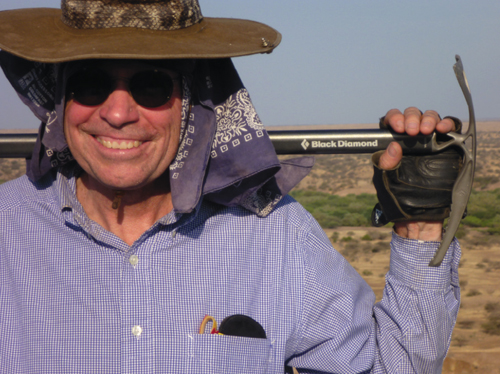
All people are born scientists. Just watch a one-year-old child. Pure, unabashed, unbridled curiosity drives each waking hour’s exploration of their worlds. Toddlers are just trying to figure out how things work as they poke and point—touch and taste—everything they can. And most children keep at it, combining the critical and creative elements fundamental to good science. As an adult, I never wanted to stop being curious, and ended up focusing that curiosity on the deep past of our human species. So I’m still asking questions, still working on mysteries, and still loving every minute of it.
Tim White
Professor of Integrative Biology
University of California, Berkeley
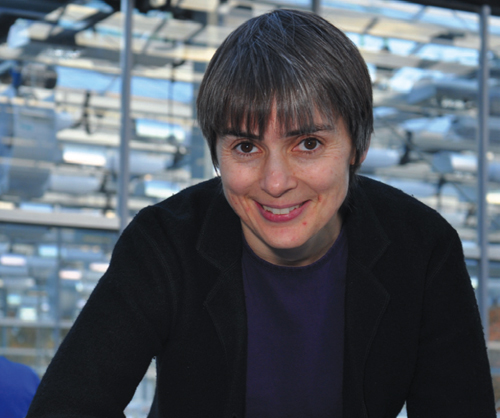
I have always been interested in how things work, and this is the essence of science. Science is about building models of the world that have explanatory and predictive power. Through this process, it is possible to build a useful framework for understanding the world around us.
My particular interest is in plant developmental biology. I would like to know how a fertilized egg becomes an oak tree, and how the tree’s final form is shaped by interactions between its genes and the environment in which it is growing. The process is partly driven by a beautiful, intricate, dynamic network of chemical messengers, through which the different parts of a plant communicate. The network was not engineered and built from the outside, like a car. It has arisen from the inside over millions of years of evolution and reassembles itself every generation. I find it an irresistible challenge to try to figure out how it works.
There are many more pragmatic reasons for chasing this kind of understanding, for example, delivering a safe, secure, sustainable food supply. But for me it is the human desire to explore and understand the world that drives science—the very same thing that drives people up Mt. Everest and to the North Pole. Science just happens to be much more useful.
Ottoline Leyser
Associate Director of the Sainsbury Laboratory
Cambridge University
When the Soviets launched Sputnik in 1957, my fate was sealed to become an engineer. By 1980, I had three degrees in engineering, was registered as a professional engineer, had worked as an engineer for five years, and had taught engineering for 10. Yet, when faculty colleagues in the arts and sciences asked me what exactly engineering was and why there were so many engineering failures, I could not provide a concise answer—even to myself. It was this situation that led me to write an explanatory book with the working title “What Is Engineering?” In the course of writing that book I discovered that at its heart engineering is about the obviation of failure. The book, published in 1985 under the title To Engineer Is Human: The Role of Failure in Successful Design, launched my career of writing about the engineering profession, bridges, failure and design. I have returned to these topics in my latest book, To Forgive Design: Understanding Failure, which contains a chapter describing my formative experiences in graduate school. Now, four decades later, I continue to learn a bit more about engineering with each new column that I write for American Scientist, and I also learn a lot from what readers write in response to my columns. Among the most enjoyable things about being an engineer is that learning never ends.
Henry Petroskibr>Aleksandar S. Vesic Professor of Civil Engineering and Professor of History
Duke University
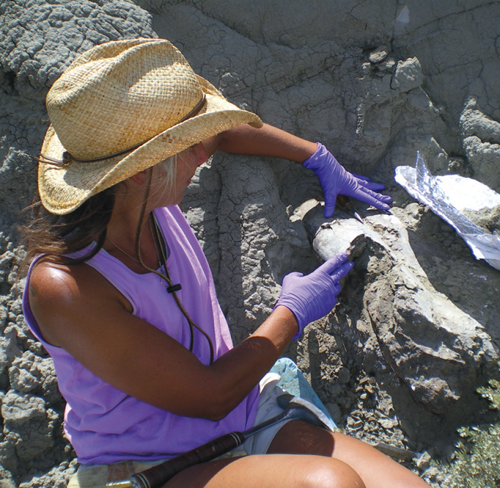
Science was not something girls did when I was growing up, and I had no expectations of career other than a teacher, nurse or secretary. But my dad was a true scholar who ignited my curiosity by reading and discussing with me everything from politics and religion to science. From him I learned to think critically and question everything. My brother taught me to read before he left for college when I was five, and fed my curiosity by sending books home from school. From him I learned to love dinosaurs and biology. But no one really “did” dinosaurs for a career, and I chose other directions until I returned to college when my children were small. My first class with noted paleontologist Jack Horner reignited my love for dinosaurs. But my kids set the direction of my unusual approach to paleontology: Because I didn’t have the option of doing frequent field research, I took my love of biology and dinosaurs into the lab. I can relate just about any biological question (human health, global warming…) to dinosaurs, and firmly believe that their biology has much to say about our own, and about the world we inherited from them. Capitalizing on public fascination with dinosaurs is also a powerful tool to offset increasing scientific illiteracy in the United States. All roads really do lead to dinosaurs!
Mary Schweitzer
Associate Professor of Marine, Earth and Atmospheric Sciences
North Carolina State University
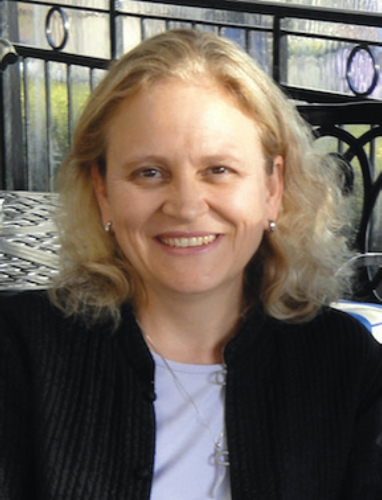
In college, I began as a philosophy major. No one in my family was a scientist, I didn’t know any scientists and it never occurred to me that I might be a scientist. But at the small liberal arts college I attended (Reed College), I was required to take, among other things, an introductory biology course. I remember sitting through some of the lectures in that class in a state of astonishment at the biological world the professors described, a world I had only a limited awareness of at that point. One day Bert Brehm, then professor of biology at Reed, taught us about coevolution, using the evolution of the fig and the fig wasp as an example. I believe my mouth literally dropped open during that lecture. I had not previously understood how powerful science was, or how satisfying scientific explanations could be. This sense of satisfaction about a logically coherent explanation for a mysterious natural phenomenon is nicely summed up by the journalist Harriet Martineau, who wrote in 1859, upon the publication of Darwin’s On the Origin of Species, “One might say ‘thank you’ all one’s life without giving any idea of one’s sense of obligation.” That’s how I felt that day in the fig wasp lecture, and that’s why I became a scientist.
Susan Alberts
Professor of Biology, Duke University
Associate Director for Science, National Evolutionary Synthesis Center (NESCent)

Click "American Scientist" to access home page
American Scientist Comments and Discussion
To discuss our articles or comment on them, please share them and tag American Scientist on social media platforms. Here are links to our profiles on Twitter, Facebook, and LinkedIn.
If we re-share your post, we will moderate comments/discussion following our comments policy.